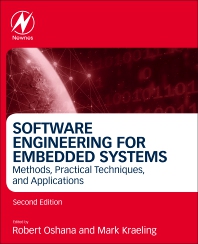Books in Embedded systems
Books in Embedded systems

Embedded Systems in Automotive Applications
- 1st Edition
- Aboubakr El Hammoumi + 1 more
- English

Making IT Sustainable
Techniques and Applications- 1st Edition
- Mikhail Gloukhovtsev
- English

Embedded System Design
Methodologies and Issues- 1st Edition
- Lawrence J. Henschen + 1 more
- English

Computers as Components
Principles of Embedded Computing System Design- 5th Edition
- Marilyn Wolf
- English

Debugging Embedded and Real-Time Systems
The Art, Science, Technology, and Tools of Real-Time System Debugging- 1st Edition
- Arnold S. Berger
- English

Software Engineering for Embedded Systems
Methods, Practical Techniques, and Applications- 2nd Edition
- Robert Oshana + 1 more
- English

SysML in Action with Papyrus
- 1st Edition
- Jean-Michel Bruel + 1 more
- English

Systems Architecture Modeling with the Arcadia Method
A Practical Guide to Capella- 1st Edition
- Pascal Roques
- English

Model-based System and Architecture Engineering with the Arcadia Method
- 1st Edition
- Jean-Luc Voirin
- English

SysML in Action with Cameo Systems Modeler
- 1st Edition
- Olivier Casse
- English